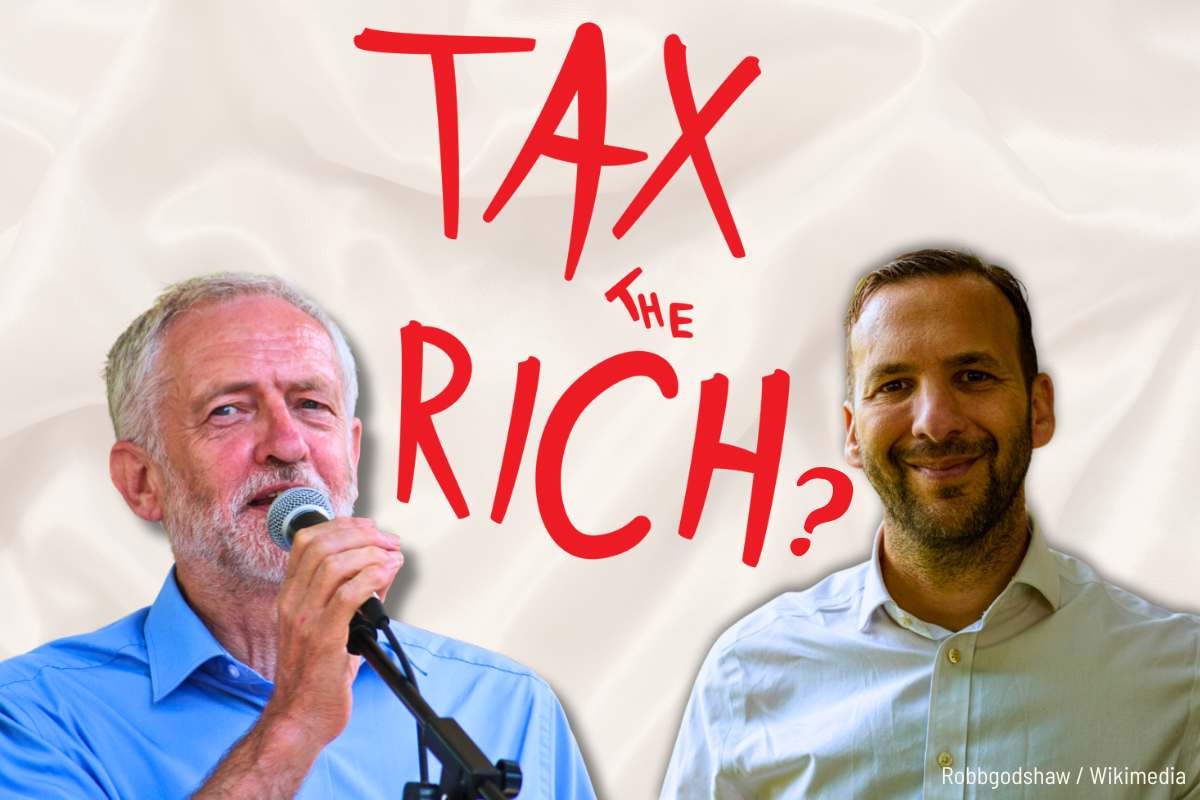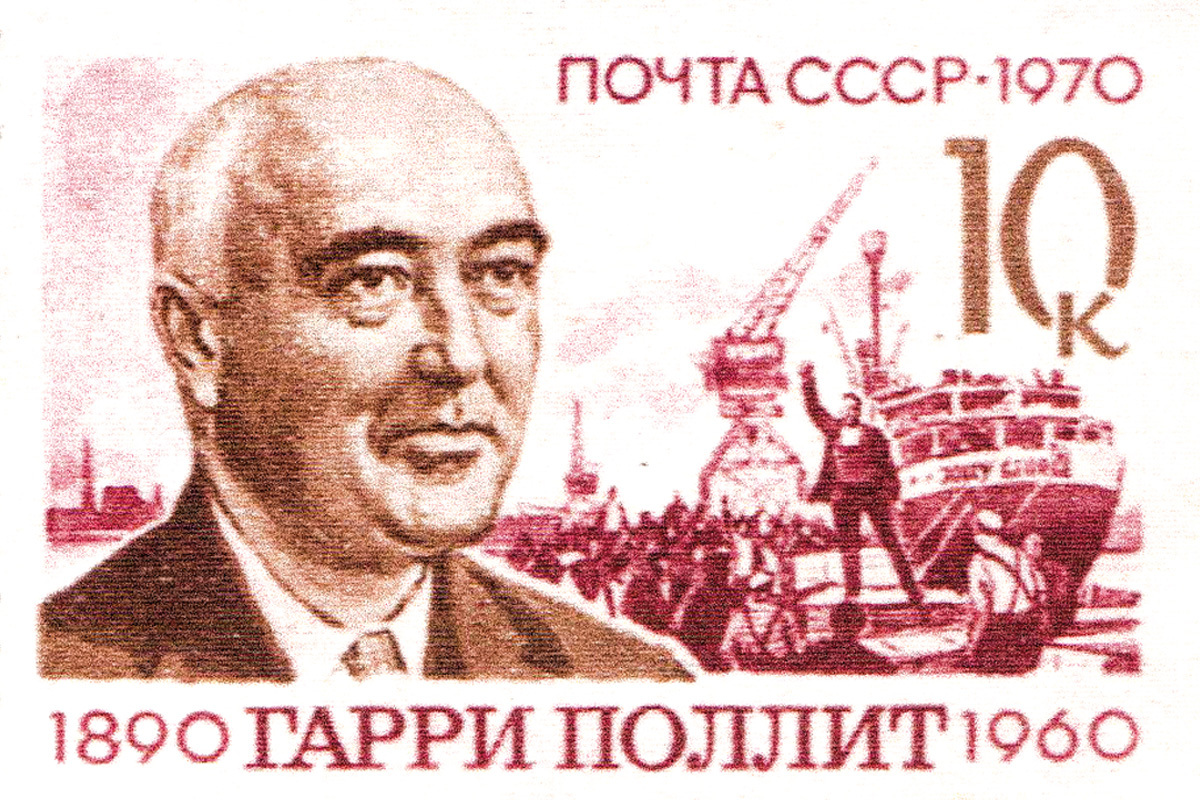This is a document on fascism and the far right from 1994, produced a year after the racist murder of Stephen Lawrence and amidst an upsurge of the far right across Europe.
We are republishing it here because the political points it makes remain entirely relevant to the situation today, providing clear guidance on what the role of Marxists should be in the fight against fascism and racism.
Decades ago, Trotsky and the Trotskyists worked out a clear strategy for combating fascism and racism. However, the long period of economic upswing and “social peace” following the Second World War had the effect of dimming the memories even of the advanced workers.
Recent experience shows that the lessons of the past are a book sealed with seven seals as far as the majority of activists are concerned. Yet this is a vital question for the future of the labour movement internationally.
Capitalist crisis
The organic crisis of capitalism, mass unemployment, insecurity, bad housing – all these can provide fertile ground for the growth of racism and all kinds of extreme right wing and fascist organisations, where the mass labour organisations do not offer an alternative.
The presence of a large number of immigrants, who were used as cheap labour during the period of post-war upswing, provides the racist demagogues, and their big business backers, with a convenient scapegoat for the crisis of the bosses’ system.
The rise of fascist movements reflects the despair of the petit-bourgeois masses and of backward layers of the working class at the failure of the reformist parties to solve their most pressing problems.
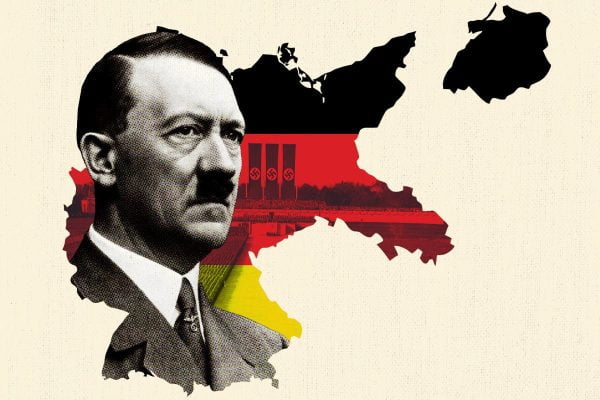
However, for reasons explained elsewhere, it is ruled out that the bourgeoisie would hand over power to the fascist lunatics again, after the experience of Hitler and Mussolini.
When they move towards reaction, they will opt for Bonapartist regimes, using the fascist gangs as auxiliaries.
Such regimes would not hesitate to use the methods of fascism. The fundamental difference is that, lacking the mass base of fascism in the past, they would not be able to achieve the total destruction of the labour organisations, as was the case under Hitler and Mussolini.
Trotsky explained in the 1930s that the ruling class will only turn to fascism as a last resort, after the workers have suffered a series of decisive defeats. Long before the bourgeoisie turns to Bonapartist or fascist reaction, the working class will have many chances to transform society.
Nevertheless, in the recent period, we have seen the re-emergence of fascist and extreme right wing movements. This is a serious warning to the labour movement.
The popular front
The fascist gangs, to use Trotsky’s phrase, consist of “human dust,” lumpens, hooligans and assorted riffraff. They are cowardly thugs who only attack individuals or small groups of defenceless people.
Where they meet with the organised resistance of the workers, they quickly crumble.
However, weakness invites aggression. Pitiful appeals to non-violence and “legality” only have the effect of encouraging the fascist gangsters, for whom liberal do-gooders and pacifists are easy prey.
It is important to understand that the struggle against fascism ultimately is a physical one. Where people are being killed, there is a limit to what can be achieved by speeches.
However, defeating racism and fascism cannot be through isolated, individual acts of violence, but through the united action of the class.
The struggle against fascism and racism is a class struggle. This idea must determine all our actions in the struggle against these phenomena.
The main aim of the Marxists in any struggle is to raise the level of understanding of the workers and the youth, starting with the most advanced and active layers.
That is progressive which serves to raise the level of consciousness and self-confidence of the working class, leading by successive stages to the conclusion that is necessary to carry out a revolutionary transformation of society.
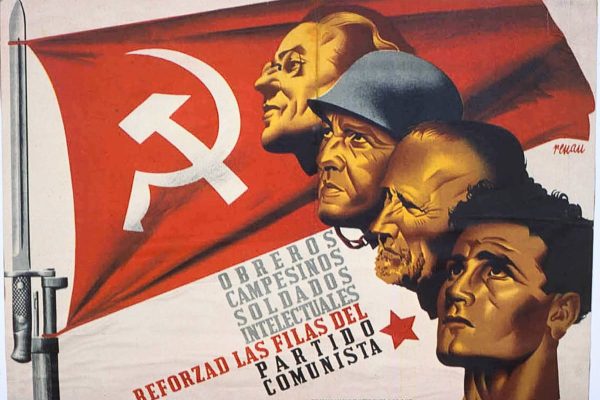
That is reactionary which tends to divert the workers attention from the main goal, confuses the class issues with all kinds of moralistic, pacifist and “democratic” verbiage, and thus lowers the level of consciousness.
From this point of view nothing is more reactionary than the policies of the reformist and “communist” leaders in the struggle against fascism
The reformist and Stalinist leaders have an organic tendency to hand over the leadership of the anti-fascist struggle to middle class politicians, liberals, churchmen and the like.
The policy of the so-called “broad front” which places petit bourgeois, intellectuals, “progressive” Tories and bishops at the head of the movement is entirely false.
The fight against fascism cannot be conducted by means of popular front policies, based on the erroneous idea that workers must ally themselves with “good” bourgeois against “bad” bourgeois.
In every case, such a policy has led to disaster and the victory of reaction. These elements contribute nothing to the real struggle, and completely miseducate the workers to place their trust in class enemies.
The state
In the 1920s and 1930s, the Social Democratic leaders frequently appealed to the state to intervene against the fascists. This was a fatal mistake, based on the false assumption that the bourgeois state is an impartial force, standing above the class struggle.
Appeals to the police for protection against fascists and racists are likewise a waste of time. Apart from the fact that in the ranks of the police are to be found no small number of fascists and racists, they could not defend workers and immigrants against the fascists even if they wanted to.
In April 1932, the German Minister of the Interior, General Gröner, issued a decree banning Hitler’s private army, the SA.
In his memoirs, the leader of the SA, Röhm, pointed out that this made no difference: “But only the uniforms and insignia disappeared. After as before, the SA exercised on the Doeberitz military drilling ground and other public squares. Only it was no longer as the SA but as the League of German Popular Sports.”
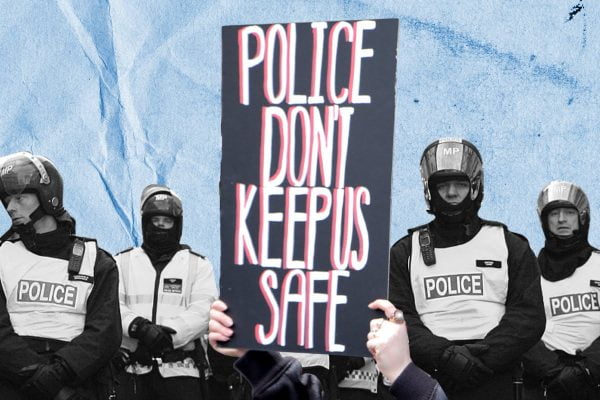
Marxists must teach the workers to rely only on their own organisation, strength and class solidarity to deal with their problems. Appeals to the bourgeois state are counterproductive for a number of reasons.
One, they divert the workers’ attention from the need to tackle the fascists where it counts in the factories, on the estates, and in the streets. It tends to lower the workers’ confidence in themselves, and to increase the confidence and audacity of the fascists.
Two, it miseducates the workers as to the role of the bourgeois state in general, and its relation to the fascists in particular.
The bourgeoisie as a whole, while they have no intention of handing power to the fascists, understand that they can be useful auxiliaries at a moment when the class struggle threatens to go beyond “normal” bounds.
For this reason, it is futile to expect the ruling class to dissolve the fascist gangs. As Trotsky said, to demand that the state disarm the fascist is equivalent to asking the bourgeoisie to disarm itself.
Where the state passes laws restricting the activities of the fascists, such laws are not used mainly against the latter, but against the labour movement, to ban demonstrations, including anti-fascist demonstrations.
Under certain circumstances, the bourgeois state may be compelled to introduce anti-racist legislation. To the degree that such legislation has even the slightest progressive content, Marxists would not oppose it.
It may have a limited effect in isolated cases, to the extent that it is put into practice by the police and the judiciary, which is not at all guaranteed.
But it is essential to explain to workers and oppressed national minorities that anti-racist laws will not solve the problem of racism, which is spawned by the conditions of capitalist society itself.
Self-organisation
The failure of the reformists to provide defence for oppressed minorities frequently leads to the demand for self-defence on the part of the minority, especially militant sections of the youth.
It is necessary for Marxists to make contact with these elements, offering them assistance and helping to link their movement to the workers’ organisations. The right of self-defence is an elementary right for all oppressed minorities, daily faced with the threat of murder and beatings by the lumpen gangs.
Before the Revolution, the Bolsheviks helped the Russian Jews to organise defence against pogroms. Racist beatings and murders must be confronted by the setting up of a defence organisation properly equipped to deal with the threat.
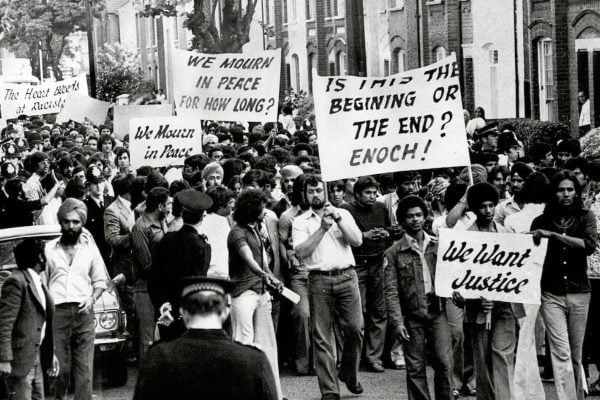
However, it is essential that the members of national minorities should not be left isolated to fight the racists. Their struggle is the struggle of the whole working class, and the task of defending communities under attack is the responsibility of the class as a whole.
The theory of “self-organisation” which is put forward in some unions, not only for racial minorities, but for women, gays, and disabled people, is reactionary and divisive.
Instead of organising all the workers together, working for solidarity, it separates off different groups in institutionalised ghettos which makes the problem worse and plays into the hands of the right wing and reactionaries.
Marxists are totally opposed to dividing the labour organisations on racial lines. We are opposed to the setting up of black sections in the workers parties and the unions.
Sometimes, it may be correct to set up ad hoc bodies such as temporary caucuses, which any interested person can attend. But permanent branches established on lines of colour or race are divisive and harmful and should be resisted.
As against the divisive policies advocated by sectarian and some black nationalist groups, Marxists advocate the greatest possible involvement of the oppressed minorities in the labour movement.
Marxists will fight for equal rights for all at every level of society. However, any rights whatsoever have to be fought for, and the prior condition for a successful fight is the unity of the working class and its organisations.
Racial and national divisions in the labour movement inevitably play the worst kind of role, and it is necessary to reject any proposal which tends to foment such divisions.
As always, the sects play a pernicious role in the struggle against racism. They water down their programme for a “broad front”, abandoning all mention of socialism, while making no real attempt to mobilise the labour movement in the struggle against racism.
It is useless to set up anti-racism organisations and campaigns without involving the mass organisations of the working class. Only a mass mobilisation of the class can ward off systematic fascist attacks. Only the organisations of the class itself can successfully combat racism and fascism.
This is in spite of the policies pursued by the right-wing labour leaders, who – despite holding in their hands the possibility of inflicting a crushing defeat on the fascists and racists with minimum effort – fear the independent movement of the workers and do their best to prevent it.
Mass movements
For their part, the sects do nothing to mobilise the rank-and-file socialist, communist and trade union workers, thus letting the bureaucrats off the hook. They feed off each other.
Marxists must conduct a systematic campaign to rouse the rank-and-file of the labour movement to the threat posed by fascism and racism. We must call on the trade union leaders to launch a mass movement against this menace.
Where racism and fascism raise their heads in the factories, mass meetings must be called to denounce it. The trade unions should get organised workers to refuse to work with fascists.
Recently, in East London the postal workers, on the proposal of a British Marxist, took the initiative to refuse to handle fascist literature. This was a splendid example of how Marxists in the unions should combat fascism.
It shows how a single individual, armed with the ideas, programme, and methods of Marxism can make a fundamental difference. Every example of a successful initiative against fascism in the workplaces must be highlighted, publicised and emulated.
Where possible, protest strikes should be called against racist attacks.
However, a sense of proportion must be maintained. Normally it is only possible to get the workers to respond in the form of strikes when the problem reaches a point where the seriousness of the threat is clear to the majority.
Exaggerated and hysterical behaviour, which is the hallmark of the sects in relation to this problem, only serves to discredit the idea of the struggle against racism and fascism in the minds of the workers.
What the ultra-left fail to understand is that the official organisations of the working class, whether conservative or revolutionary, are forced to oppose fascism, at least in words.
It is the duty of the Marxists to take up the speeches of the leaders, and the resolutions passed at conferences, and demand that they be translated into action.
We must at all times maintain a level headed and positive approach, avoiding ultra-left denunciations of the reformist leaders, and concentrating our fire against the class enemy: the fascists, and the bankers and capitalists who stand behind them.
It is necessary to explain to the workers that fascism represents a threat to the labour movement. We must remind them of what happened in the past, and point out the anti-working class activities of the fascists in different countries at the present time. The labour movement ignores such activities at its peril.
Anti-fascism
The first task of a serious anti-fascist campaign is to obtain information. The war against the fascists must be treated with the same seriousness and precision as a military campaign.
It is necessary everywhere to find out who the fascists and their sympathisers are, pinpointing the ringleaders. This information should be publicised, together with information about statements and activities.
In this way, the fascist thugs, who are invariably cowards, will understand that they will not escape with impunity from the consequences of their actions.
When a fascist gang attacked a meeting in Rome where one of our comrades was speaking, they were given a good lesson by some of the youth, who “introduced them to the floor,” putting the leader in hospital.
As soon as they saw the leader on the floor with his head broken, these “tough” guys ran like rabbits. That is typical of the behaviour of these creatures, once serious resistance is put up.
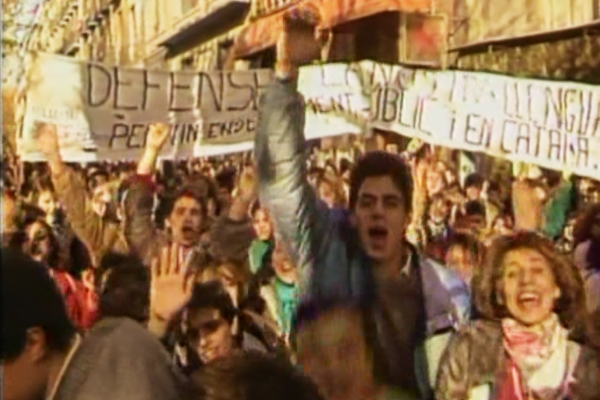
In Spain in December 1986, the first big student demonstration organised by our tendency was attacked by armed fascists, and some young school students were put in hospital.
After this the Spanish comrades decided that all future demonstrations would be protected by an organised force.
Young people from the schools were organised and armed with heavy sticks, disguised as banners, and under the control of stewards selected from the ranks of the tendency. The main trade unions were approached and assisted us with loudspeakers, walkie-talkies and the use of their local resources.
In the following demonstration, a fascist was so badly beaten by the youth that he ended up in hospital. After that there were no more attacks from the fascists.
At all of the demonstrations organised by the Spanish comrades, the defence force played an essential role, and showed great courage and exemplary discipline, even when faced with the attacks of armed police.
However, it should be made clear that the task of such a defence force is not to attack the police. This will be used as an excuse for the police to crush anti-fascist demonstrations.
Ultimately, the fight against fascism boils down to a question of defending the organisations of the class and individual workers by physical means, which can only be achieved by the collective action of the workers.
Self-defence organisations should be set up, embracing both the members of the oppressed minorities and the workers’ organisations.
During the Russian Civil War, as an answer to the massacres perpetrated by the White Guard, Trotsky warned that for every worker or peasant killed by the Whites, the Bolsheviks would shoot ten landowner and capitalist hostages.
In the same way, for every victim of fascist violence, ten fascists should receive similar treatment. The fascists must be taught by painful experience that the price of such adventures will not be cheap!
In Italy in the 1960s, when the fascists tried to raise their heads again, the Italian workers recognised the threat and responded with a massive movement, burning down fascist headquarters and beating up fascists on the streets all over Italy.
Revolution
Unfortunately, with the passing of time, the memory of fascism has receded for many.
It is the duty of Marxists to explain the lessons of history to the present generation of workers and youth; not only the horrors of fascism, but also the glorious anti-fascist movements.
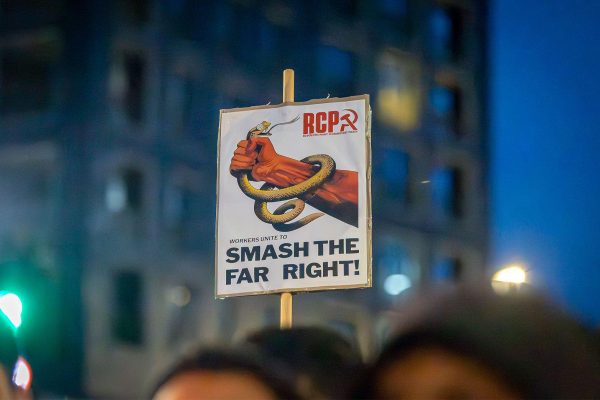
For Marxists, the fight against fascism involves both a political struggle to rid the labour movement of the pernicious ideas of popular frontism and class collaboration, and a physical struggle to defend the workers organisations against the threat of destruction.
Through a combination of patient explanation by the Marxists and the concrete experience of struggle, the working class, beginning with its most advanced layers, gradually learns how to fight effectively.
A series of small battles, with both victories and defeats, prepares the ground for the final victory. The struggle against racism and fascist and Bonapartist reaction forms a vital part of this process.
In the last analysis, the working class can only decisively defeat reaction by an all-out struggle for power, transforming society along socialist lines.
Only in this way will it be possible to eliminate the social conditions which give rise to the horrors and abominations which we now see flourishing on all sides like poisonous weeds.
Ultimately, the choice before humanity, in the words of Karl Marx, is socialism or barbarism.
London, 22 June 1994





